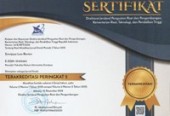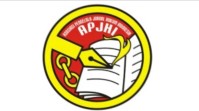The Influence of Transjudicial Conversation in the Cross-fertilization of Philippine Human Rights Jurisprudence
DOI:
https://doi.org/10.28946/slrev.Vol8.Iss2.3574.pp393-416Keywords:
Freedom of Expression, Gap-Filling Mechanism, Human Rights Norms and Standards, Religious Freedom, Transjudicial Conversation.Abstract
Transjudicial conversation refers to the domestic court's judicial practice of cross-citing foreign decisions on common and shared human rights issues. Scholars have argued that this phenomenon facilitates the cross-fertilisation of rights norms and standards across territories. While this has been documented and studied in various jurisdictions, its incidence and effect in the Philippine context is yet to be fully understood. The paper thus seeks to explore the extent of such influence in the Philippine setting, specifically in the development of domestic human rights jurisprudence. In order to examine its impact, this research employs a qualitative research design. Select cases on free speech and religious exercise rights were analysed using doctrinal and content analysis approaches. These cases were purposively chosen, considering that Philippine provisions on these rights have shown close affinity with foreign constitutions. The analysis reveals that the participation of the Philippine Supreme Court in the transjudicial conversation phenomenon generally causes the cross-border fertilisation of human rights norms. Particularly, the impact of this engagement contributes to filling the gap in the domestic understanding of human rights concepts, expanding existing legal systems such as human rights and penal laws, and aligning national human rights systems with international laws. Such impacts enrich the domestic understanding of free speech and religious rights, specifically drawing bright lines between legitimate state intervention and individual enjoyment of the rights.Downloads
References
-United Transport Koalisyon (1-Utak) v. Commission on Elections, 755 SCRA 441 (2015)
Agabin, Pacifico. “The Politics of Judicial Review over Executive Action: The Supreme Court and Social Change.†In Unconstitutional Essays, 193-194. Quezon City: University of the Philip-pines Press, 1996.
Aglipay vs. Ruiz, 64 Phil. 201 (1937).
American Communications Asssociation v. Douds, 339 U.S. 382 (1950).
Balbuna et al., v. Secretary of Education, 110 Phil 150 (1960).
Barak, Aharon. “Foreword: A Judge on Judging: The Role of a Supreme Court in a Democracy.†Harvard Law Review 116,1 (2002): 16-162.
Bernas, Joaquin. Constitutional structure and powers of government: notes and cases. Manila: Rex Bookstore, Inc, 2005.
Cabansag v. Fernandez, 102 Phil. 152 (1957).
Ciencia Jr, Alejandro. “7 From judicialization to politicization of the judiciary.†The Judicialization of Politics in Asia 12 (2012): 117.
Ciencia, Jr., Alejandro. “From Judicialization to Politicization of the Judiciary: the Philippine Case.†In The judicialization of politics in Asia edited by Bjorn Dressel, 117-138. New York: Routledge, 2012.
Conally v. General Construction Company, 269 U.S. 385 (1926).
Consolidated Edison Co. v. Public Service Commission, 447 U.S. 530 (1980).
Desierto, Diane. “ ‘A Universalist History of the 1987 Philippine Constitution (I)’.†Historia Constitucional/Electronic Journal of Constitucional History 10 (2009): 383-444
Desierto, Diane. “A Universalist History of the 1987 Philippine Constitution (II).†Historia Constitucional: Revista Electrónica de Historia Constitucional 11 (2010): 427-484.
Disini, Jr. v. Secretary of Justice, 727 Phil. 28 (2014).
Ebralinag et al., v. Division Superintendent of Schools of Cebu, 219 SCRA 276 (1993).
Erznoznik v. City of Jacksonville, 422 U.S. 205 (1975).
Estrada v. Escritor, 455 Phil. 411.
Estrada v. Sandiganbayan, 36 SCRA 394 (2001).
Evangelista v. Earnshaw, 57 Phil 255 (1932).
Gerona v. Secretary of Education, 106 Phil. 2 (1959).
Ginsburg, Tom. Judicial review in new democracies: Constitutional courts in Asian cases. Cambridge University Press, 2003.
Gitlow v. New York, 268 U.S. 652 (1925).
Hirschl, Ran. Comparative matters: the renaissance of comparative constitutional law. Oxford University Press, 2014.
Isserles, Marc E. “Overcoming Overbreadth: Facial Challenges and the Valid Rule Requirement.†American University Law Revie 48 (1998): 359-464.
Jackson, Vicki C. “Constitutional comparisons: convergence, resistance, engagement.†Harvard Law Review 119 (2005): 109-128.
Jacobs, Francis. “Judicial Dialogues and the Cross-Fertilization of the Legal Systems: The European Court of Justice.†Texas International Law Journal 38 (2003): 547- 556.
Jacobsohn, Gary J. “Alternative Pluralisms: Israeli and American Constitutionalism in Comparative Perspective.†The Review of Politics 51, no. 2 (1989): 159-189.
Kansra, Deepa. “Human Rights and the Practice of Cross-referencing by Domestic Courts.†Kamkus Law Journal 4 (2020):117-129.
L’Heureux-Dube, Claire. “The importance of dialogue: globalization and the international impact of the Rehnquist court.†Tulsa Law Journal 34 (1998): 15-40.
Lagunzad v. Soto Vda. De Gonzales, 92 SCRA 476 (1979).
Law, David S., and Wen-Chen Chang. “The limits of global judicial dialogue.†Washington Law Review 86 (2011): 523- 578.
Lehman v. City of Shaker Heights, 418 U.S. 298 (1974).
Lemon v. Kurtzman, 403 U. S. 602 (1971).
Mak, Elaine. “General Principles of Law and Transnational Judicial Communication.†In General Principles of Law-The Role of the Judiciary, edited by Laura Pineschi, 45-66. Switzerland: Springer, 2015.
McCrudden, Christopher. “Common law of human rights?: Transnational judicial conversations on constitutional rights.†Oxford Journal of Legal Studies 20,4 (2000): 499-532.
Meyer v. Nebraska, 262 U.S. 390 (1923).
Mohallem, Michael Freitas. “Horizontal Judicial Dialogue on Human Rights: the Practice of Constitutional Courts in South America.†In Judicial Dialogue and Human Rights edited by Amrei Muller and Hege Elisabeth Kjos, 67-113. Cambridge: Cambridge University Press, 2017.
Muller, Amrei, and Kjos, Hege Elisabeth. Judicial dialogue and human rights. Cambridge: Cambridge University Press, 2017.
Municipality of Nueva Caceres v. Roman Catholic Bishop of Nueva Caceres, 24 Phil. 485 (1913).
Murray, John Courtney. “The Problem of Free Speech.†Philippine Studies 1, 2 (1953): 107-124.
NAACP v. Alabama, 360 U.S. 240 (1959).
Nachura, Antonio. Outline Reviewer in Political Law. Quezon City: VJ Graphic Arts, Inc., 2014.
Osmeña and Garcia v. COMELEC, 199 SCRA 750 (1998).
Pangalangan, Raul. “Overview of the Philippine Judicial Systems.†Accessed 13 November 2023. http://hdl.handle.net/2344/00015195.
People of the Philippine Islands v. Feleo, 58 Phil 573 (1932).
People of the Philippines Islands v. Perez, 45 Phil 599 (1923).
Philippine Constitution, art IX-C, sec. 2.5; Philippine Constitution art VI, sec. 29.2.
Philippine Constitution, art. II, sec. 6.
Philippine Constitution, art. VI, sec. 29.2
Re: Letter of Tony Q. Valenciano, 819 SCRA 313 (2018).
Reno v. American Civil Liberties Union, 521 U.S. 844 (1997).
Romualdez v. Sandiganbayan, 435 SCRA 371 (2004).
Schenck v. United States, 249 U.S. 47 (1919).
Slaughter, Anne-Marie. “A typology of transjudicial communication.†University of Richmond Law Review. 29 (1994): 99-128.
Slaughter, Anne-Marie. “Judicial globalization.†Virginia Journal of International Law 40 (1999): 1103-1124.
Spouses Romualdez v. COMELEC, 576 Phil. 357 (2008).
Tiojanco, Bryan Dennis, and Leandro Angelo Y. Aguirre. “The Scope, Justifications and Limitations of Extradecisional Judicial Activism and Governance in the Philippines.†Philippine Law Journal 84, 1 (2009):73- 153.
United States v. O’Brien, 391 U.S. 367 (1968).
Vasiliev, Sergey. “Cross-fertilisation under the Looking Glass: Transjudicial Grammar and Reception of Strasbourg Jurisprudence by International Criminal Tribunals.†In Judicial Dialogue on Human Rights, edited by Paolo Lobba and Triestino Mariniello, 13-39. Boston: Brill Nijhoff, 2017.
Video Bradfield v. Roberts, 175 U.S. 291 (1899).
Voeten, Erik. “Borrowing and nonborrowing among international courts.†The Journal of Legal Studies 39,2 (2010): 547-576.
Walz v. Tax Commission of the City of New York, 397 U.S. 664 (1970).
Waters, Melissa A. “Mediating norms and identity: the role of transnational judicial dialogue in creating and enforcing international law.†Georgetown Law Journal 93 (2004): 487-574.
West Virginia v. Barnette, 319 U.S. 624 (1943).
Wiener, Antje, and Philip Liste. “Lost without Translation; Cross-Referencing and a New Global Community of Courts.†Indiana Journal of Global Legal Studies 21 (2014): 263-296.
Zorach v. Clauson, 343 U.S. 306 (1952).















